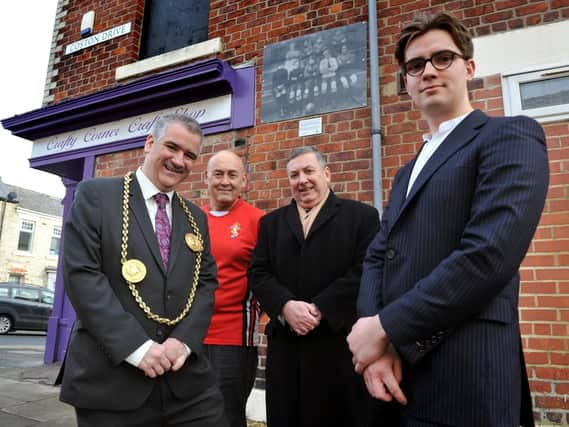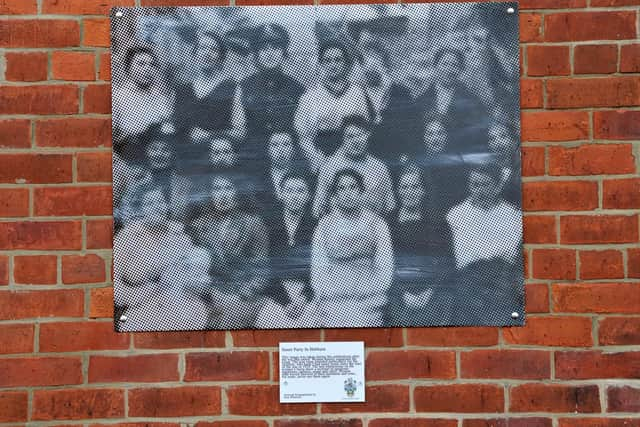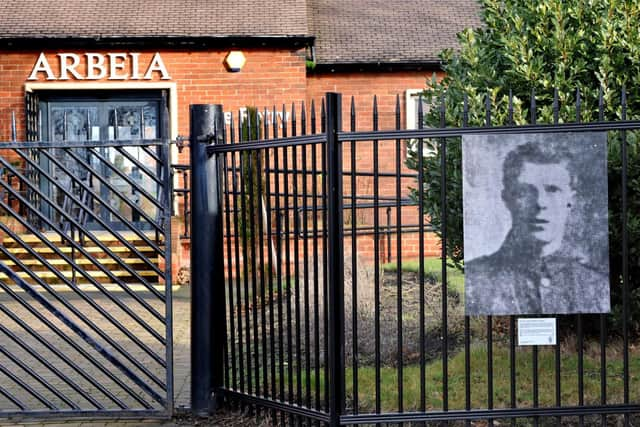South Tyneside's First World War heroes remembered


Images of the war years have been captured on Aluminium panels which have now been placed in eight locations around the Lawe Top area of South Shields.
The pictures highlight the spontaneous phenomenon of street shrines, which were common place across the UK at the time of the 'Great War' - and have been produced by artits Jack Whitwell.


Advertisement
Hide AdAdvertisement
Hide AdShrines were often formed on the end of terraced streets to honour the memory of those from the local area who served their country, never to return home, and acted as memorials in the absence of a grave.
Mayor of South Tyneside, Coun Ken Stephenson said: “Street shrines were a feature of the time, an informal tribute in communities to honour local people who made the ultimate sacrifice.
“And we know from our records that a number of street shrines were created across the Lawe Top area 100 years ago, with bereaved family members and the community placing photos and trinkets on streets dedicated to those lost to the harrowing four-year conflict.
“The art installations are thought provoking, representative of the enormous suffering and losses sustained by working class communities and how local people came together to honour their loved ones and seek solace while the war still raged and in the aftermath.”


Advertisement
Hide AdAdvertisement
Hide AdStreet shrines forms part of a joint Heritage Lottery-funded initiative between South and North Tyneside councils to commemorate the end of the First World War. The community heritage project, involving local organisations, groups and school children, has explored the challenges and changes faced by local families in the post-war period, specifically looking at the impact the conflict had on returning soldiers and the home communities.
Coun Ed Malcolm, Chairman of South Tyneside Armed Forces Forum, said: “The impact of the First World War was far reaching, shaping every part of the UK with most people being connected to the war in one way or another.
“This project is an artistic interpretation of some of the memorials that would have been created on South Tyneside streets in honour of those who never returned to their families and close knit communities. They not only highlight how street shrines were a real focal point for remembrance at the time, but showcase some of the war-time images of the Borough. It is just one part of a range of projects that help to commemorate such a significant event in world history.”
One of the installations portrays the image of Hawthorne Leslie’s ladies football team in recognition of the large numbers of women recruited into jobs vacated by the men fighting in the war.
Advertisement
Hide AdAdvertisement
Hide AdIt has been sited on the side of the Crafty Corner building in Coston Drive, thanks to the support of owner David Thompson. David served 24 years as an Army Warrant Officer 1 in the Royal Electrical and Mechanical Engineers (REME) after signing up as an apprentice mechanic at the age of 15.
He said: “This scheme is a brilliant way to commemorate the anniversary and it’s a particularly great for local children and their learning about the war.
“We’ve also had people coming in to the shop asking what the pictures on the wall are so it’s definitely sparked an interest in the community and getting people talking about women’s roles in the war effort and the calls for equal rights. It’s only right that we do not forget what happened and the sacrifices made.”
The Lawe Top street shrine panels also include an image of the pilot cutter Protector ship, which was devastated by a mine at the entrance to the Tyne on New Year’s Eve in 1916 with the loss of all 19 Tyneside men aboard – the youngest aged only 16.
Advertisement
Hide AdAdvertisement
Hide AdOthers installations highlight the Ingham Infirmary in 1918, which was later gifted 24 cots by the town as a memorial following the war, as well as South Shields born soldier, Private Jasper Matthews Batey, who was killed in action in 1916, with his picture representing all the soldiers from South Tyneside.
An image of a Peace Day street party in Hebburn is also replicated on the corner of Vespasian Street and Roman Road. While the picture celebrates the end of the war, the mixed emotions of sadness, anger and relief can be seen etched on the faces of women, who had waved farewell to their husbands and sons, for some never to be seen again.
The street shrines art installations will remain in place for the next six months to coincide with the 100th anniversary of World Peace Day in June.
For information about work in South Tyneside to commemorate the end of the First World War visit www.southtynesideremembers.org.uk